Another Timbre TimHarrisonbre
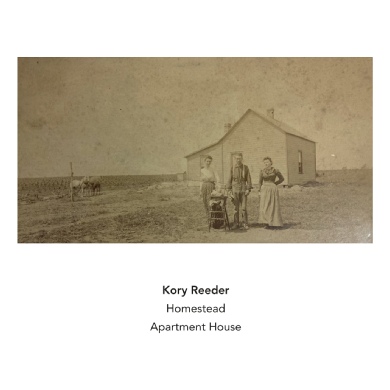
Interview with Kory Reeder by Marat Ingeldeev
You’re returning to Another Timbre with a new long-form work, your string quartet
Homestead. Before we discuss the music itself, could you tell us what inspired you
to write this piece? How does it connect to Homestead National Historical Park and
the Homestead Acts?
In July 2023, I got an email from Simon at Another Timbre the
morning I hit the road to go to Homestead as artist in residence. I spent that drive
thinking about what I’d like to do, and the name “Homestead” sort of stuck in my
mind the whole time. The idea of another big project, something new, something written
for this release was really appealing, and Simon explicitly asked about string quartets,
so that planted a seed.
For years, folks have been referencing the Great Plains within the soundworld that a lot of my music occupies. I never really thought much of this, but it can be a way to open a door to my music. Around the same time, I was touring with Ryan Seward and Andrew Weathers and we had a day off in Kearney, Nebraska. They wanted me to show them around and tell them what the area means to me. I never felt embarrassed about where I’m from, but never thought about it as a place I had more than a familial connection to; this all kicked off a lot of learning about the Great Plains, about Nebraska history, and the connection my family has in the region.
So, while I was in residence at Homestead, I was doing a lot of preliminary research on my family history, the regional ethnography, the settler colonial process of “Manifest Destiny” and Western expansion of the United States. At the same time, I was given access to the archives at Homestead and found some really amazing materials and artifacts, including hand-written manuscripts of music, hymnals, photographs, quilts, etc. I’m typically rather skeptical of programmatic instrumental music, or instrumental music that is trying to express something utterly specific, but I had been starting this period of reassessing my relationship with my home state and this project felt like a great place to explore that idea.
The Homestead Acts themselves are a long and complicated history, and far too much to dig too deep into here, so I encourage anyone interested to look it up. However, I wouldn’t say that this piece is a commentary on that—and I am deeply critical of this part of American History—but it was where I started learning and reassessing my relationship, and it’s an important part of the development of Central Nebraska that brought my family there. So, whether or not the piece sounds like that or if this is more a “meditation on the concept,” I don’t really have a strong sense. There is material directly from the archive in the piece, and it is a genesis point for a lot of what I’m thinking about now and how I situate myself within this history.
Homestead is structured in four movements, with an interlude separating the two halves.
Each movement is named after a classical form, style, or genre—Hymn, Sonata, Rondo,
and Waltz—paired with an intriguing subtitle. What is the significance of these names,
and how do they shape the music itself?
The first time I wrote a string quartet as a student, a professor told me that there is “pressure with string quartets” because every “great composer” has one… I do not subscribe to this notion at all, and never have—I have written several string quartets, and I think this peer-pressure from dead people is a deeply problematic state of mind. That said, I thought it would be interesting to play with the exceedingly traditional framework of the genre and work within it while doing my own thing. That’s why the piece is in 4 movements: the traditional structure of the historical genre.
When I really started working on Homestead, I was teaching form, analysis, and counterpoint for the first time, revisiting a lot of these traditional concepts, and I wanted to explore them in my own work. I have jokingly described this piece as part of my “neoclassical period,” but a lot of those ideas are there: the sonata is a sonata (if you can find it), the rondo is a rondo (if you can find it), and the waltz is a theme and variations (if you can find it). Conceptually, this reconciliation of the historical paradigms with my current creative thinking reflects the more personal framework I described in your last question. The subtitles are also literal: the music you hear is derived from the objects outlined in the subtitle. For example, in the fourth movement Waltz, the first violin is playing almost an exact version of a hand-written manuscript I found in the archives at Homestead—of course, I do my own thing with it.
I find the first movement quite serene, with a single note seemingly grappling against the surrounding chordal texture. In contrast, the second movement—probably my favourite—feels more brooding, with an intense, beautiful amalgamation of cascading tones and rhythmic energy. How did you achieve that effect compositionally?
A lot of my music is harmonically rather static: I like to hang out in harmonic zones for a long time, and I like to sit on a single note for a while and pivot around it almost like a center of gravity. You can get this with long tones, and I love doing that, but a contrasting method is to have a ton of activity without really moving the overall harmony at all. I think I initially got this idea from a deep dive I did a long time ago: listening to every piece by Ligeti, especially how he uses micropolyphony. So, the harmonic material doesn’t move very quickly, but there is a ton of activity. With some of my larger ensemble pieces I like to subsume the pulse and get lost in interconnecting webs of sound, but with this piece (and with such a small intimate ensemble) I liked how the clarity of eighth note pulse locked in these patterns in my ear. Like a quilt or a fabric, you can hear these interlocking patterns, but it gets lost in the close-knit cluster. Compositionally, I thought about this as a single line—a single thread—that overlaps on top of itself. But, I always use my ear, so if things sounded off or needed a change, I would just adjust it; it’s not a fixed rigid system as much as it is a method to soundworld.
Since you've mentioned working within a traditional four-movement design while adding your own twists, I’m curious—do you have a favourite string quartet?
Probably not a favorite, to be honest, but there are plenty that I like. Some obvious ones, like Feldman’s and Jürg Frey’s, are very close to my heart. I listen to a lot of music and really like several—new and old—that may or may not have had an influence on the piece like Sibelius’ Voces Intimae, Shostakovich 15, John Luther Adams’ Lines Made by Walking, Catherine Lamb’s string quartet and divisio spiralis, as well as other releases from Another Timbre like Linda Catlin Smith’s recent Flowers of Emptiness which has String Quartet No. 6, or the whole Cassandra Miller: String Quartets album… there’s a lot out there!
You’ve also mentioned being sceptical of programmatic instrumental music or fixed meanings. How do you view titles in this context? To me, a piece’s title can profoundly shape how I listen to music, often setting a scene—though sometimes missing the mark. Do any composers stand out for their approach to titling?
This is something I'm really grappling with personally, and I am sure smarter people have given better answers. On the one hand, there’s sometimes an attempt at literal representation or specific storytelling, which I really don’t find appealing at all. A joke I’ve made in the past is that someone can write a piece about a tree in their grandmother’s backyard, but if I don’t feel the invocation of that tree, or if the title suggests something else, then does the piece fail? There are plenty of pieces with deep meaning that can be derived just by title, and there are plenty of pieces with absolutely uninspiring titles that can be intensely affecting and evocative, and everything in between. You can mix and match the music vs. title vs. message in any way you want and you’ll find examples of good and bad.
So, to answer your question: not really! I mentioned Feldman and Frey earlier: Feldman has titles which I find utterly uninspiring, but they’re kind of perfect, and Frey’s piece Architektur der Empfindungen—I don’t speak German, but I can surmise the first word by the cognate (not that it actually matters, though, because I think it’s an amazing piece regardless). I think Eastman’s titles are just as profound and important as the music as well, and there are plenty of pieces with eye-rolling titles that have been really important to me. To be completely honest, most of the time it’s not really something I think too much about when I listen to a new album or get a recommendation.
Fair enough! When it comes to your own work, how do you go about choosing titles?
Personally, I hate titling pieces and it’s probably my least favorite step in the creative process. I actually have a rather long note on my phone of title ideas that I pull up when it’s about that time in the process. I’ll then cull through that to find something I think is resonant with the music or ideas in the piece (many of them are from poetry or lines from books). The fact that the title “Homestead” stuck in my head before putting pen to paper is probably the 3rd time that’s ever happened to me—and it’s usually the last thing I do when I finish a piece. With Homestead, I don’t want to assume that any listener will be “transported” somewhere, or hear a story unfolding, or something. By titling the piece something specific like that, I hope that it signals something personal from me being projected out into the world. It is a piece that comes from a time and place in my life and, ultimately, I hope folks enjoy the music.
at236 Kory Reeder ‘Homestead’
A string quartet in 4 movements with an interlude, played by Apartment House:
Chihiro Ono & Amalia Young, violins
Bridget Carey, viola Anton Lukoszevieze, cello
1 ‘Hymns: from a dog-eared book found in an unmarked box’
2 ‘Sonata: from preserved quilts and fabrics’
Interlude: Pax Americana
3 ‘Rondo: from several fragile plate negatives’
4 ‘Walz: theme and variations from a hand-written fragment’ Youtube extract
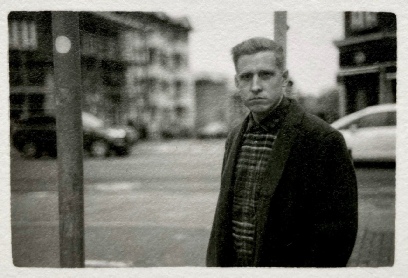
Kory Reeder
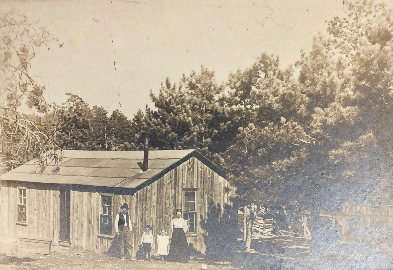
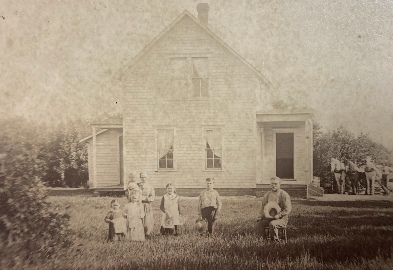
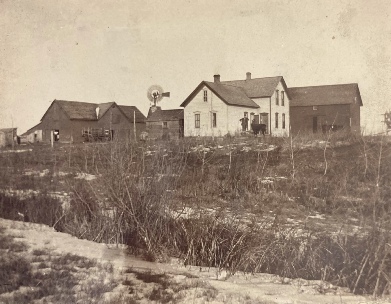
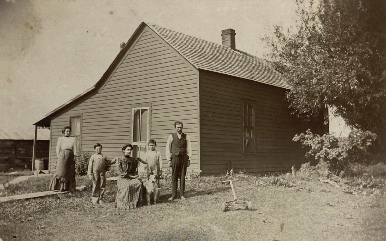
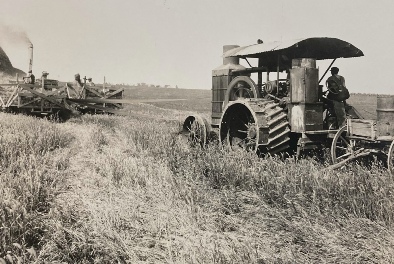
Archive photos kindly provided by the Homestead National Historical Park from the Reynolds family archive